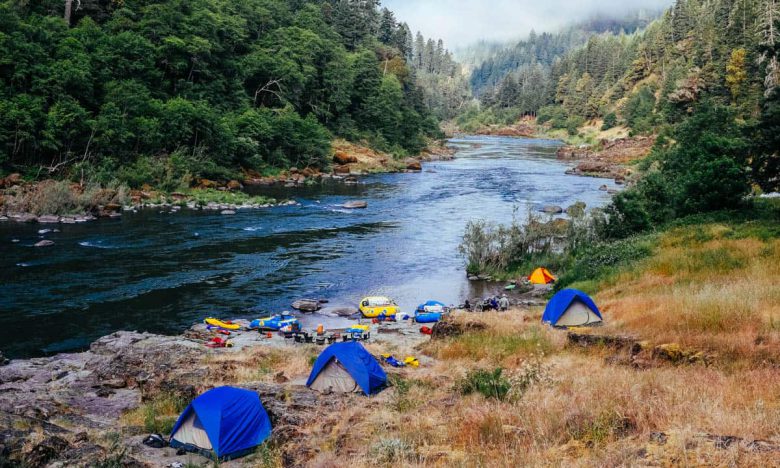Rivers are the saws of the Earth, cutting their way through millions of years of lava flows and landslides to create the canyons we see today. The Rogue River is one of these canyons. It was formed with the Klamath Mountain range and yields some spectacular geology, some of which is more than 150 million years old.
From the start to the end of the trip, boaters float through three geological formations.
- Rogue Formation
- Dothan Formation
- Flournoy Formation
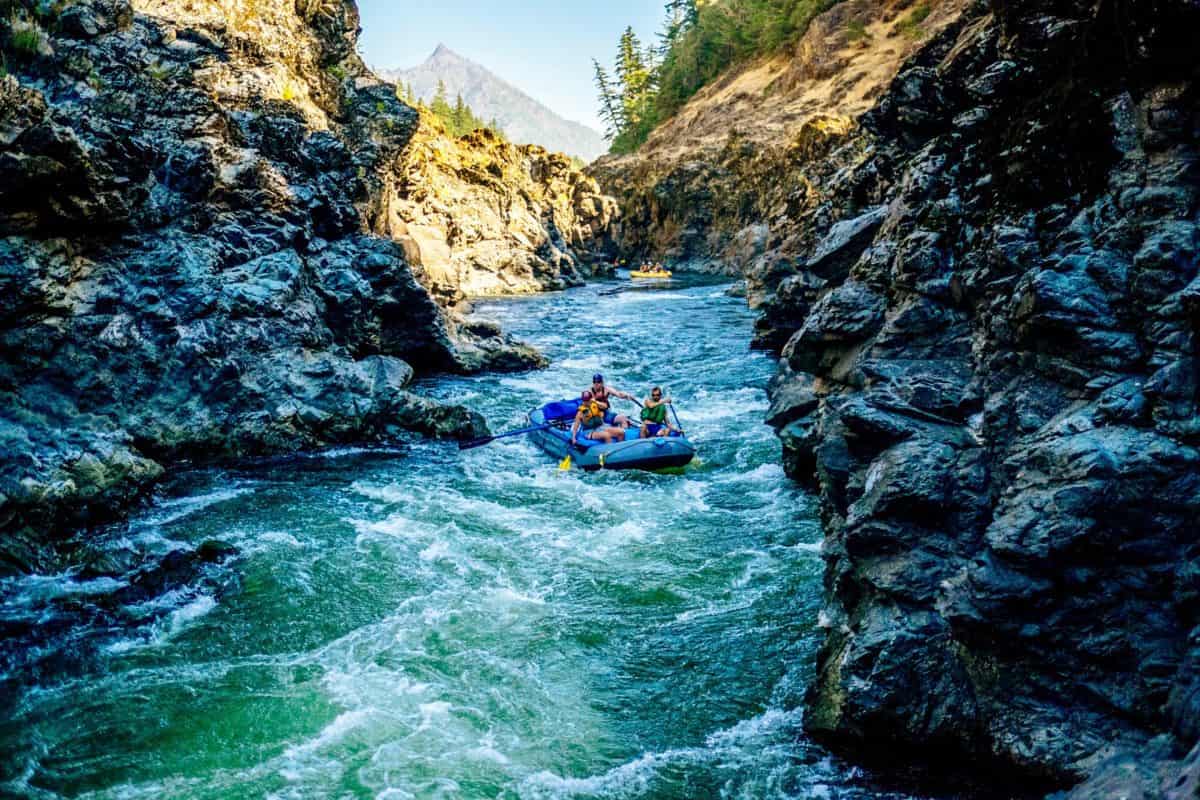
Rogue Formation
The Rogue Formation begins at Galice and continues to dominate the geology until Tyee rapid. At Tyee rapid, the Dothan Formation covers and blocks the Rogue Formation from sight for 14.7 miles, all the way down to China Bar. At China Bar, the Rogue Formation surfaces and is the main rock until Tate Creek. Throughout the Wild section of the Rogue River, the Rogue Formation is the most common of the three rock formations.
- Metavolcanic – quartz, serpentine, gneiss
- Hard and erosion resistant
- Mineral rich
Rainey Falls
This is some of the most erosion resistant rock in the lower Rogue canyon, creating the dramatic rapid for boaters to navigate their way down. The type of metamorphic rock seen here is Gneiss and Serpentine.
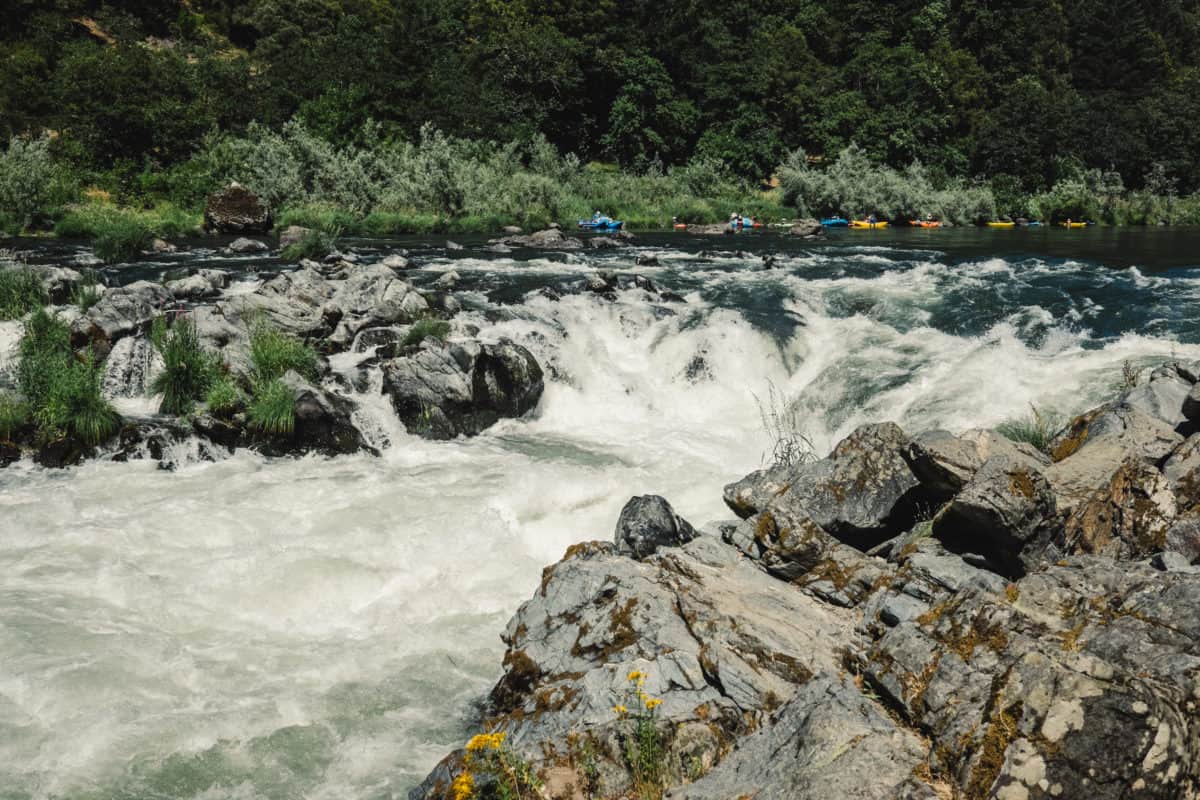
Dothan Formation
The interruption of the Rouge Formation is due to a submarine avalanche of rock from ancient coastal ranges east of the Rogue. This new layer of rock created the Dothan formation. It spread across the Rogue Formation starting at Tyee rapid and remaining on top until China Bar.
- Metasediment – originally marine sandstone, mudstone, and siltstone
- Younger than the Rogue Formation
- More prone to erosion
Tyee Rapid
The rock outcropping that forces the river to make a left bend at Tyee rapid is a great example of the Dothan Formation. The color and texture difference of this outcropping are more noticeably seen in the reds, browns and rougher grain. If you’re paying attention, it is easy to notice the start of the geological change to the Dothan Formation here.
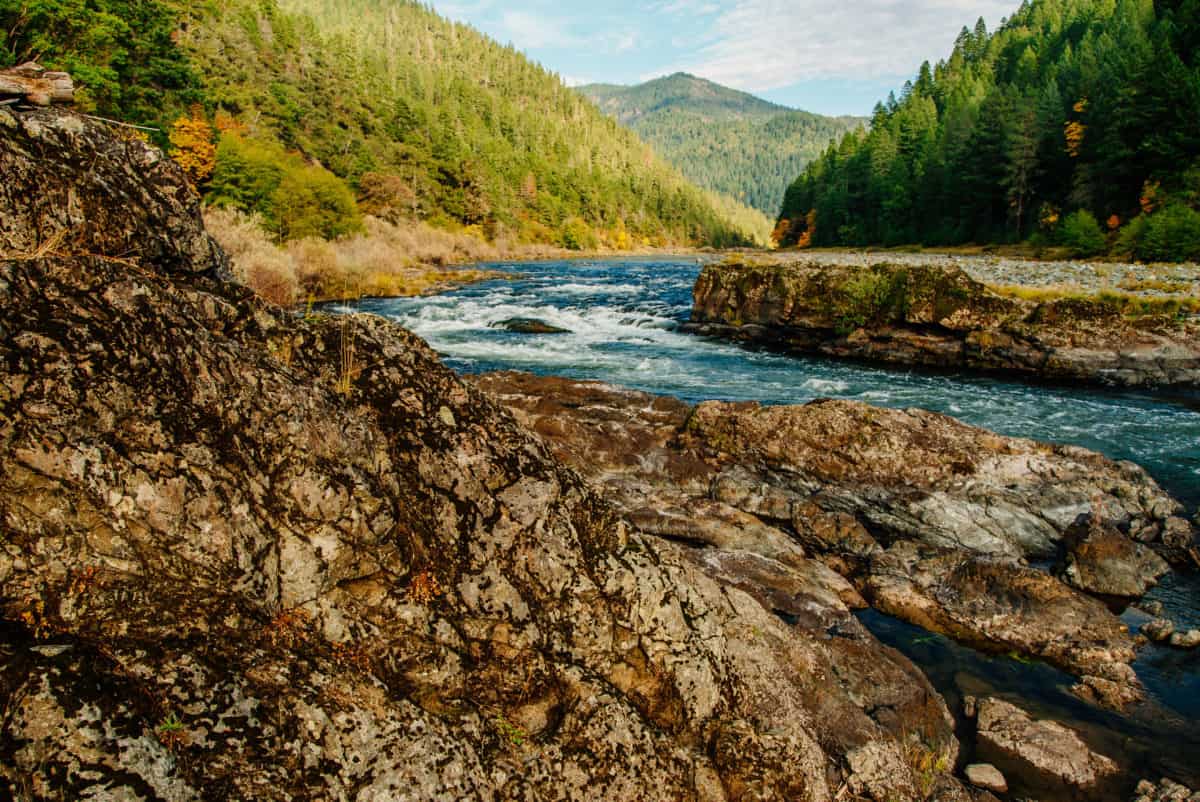
Horseshoe Bend
An large mound of rock, primarily composed of quartz, forces the river to make an impressive 180 degree turn. While big enough to force the river around it, the more erosion prone Dothan Formation is evident here where the river has started to eat away caves along the river level rock.

Travel through time…
The river found an ancient fault line where the Rogue Formation met the Dothan Formation creating Mule Creek Canyon. The left wall is rock from the younger Dothan Formation while the right wall is rock from the older Rogue Formation. The meeting of the two formations created the dramatic canyon. The Dothan Formation is replaced by the Rogue Formation after the two miles of Mule Creek Canyon.
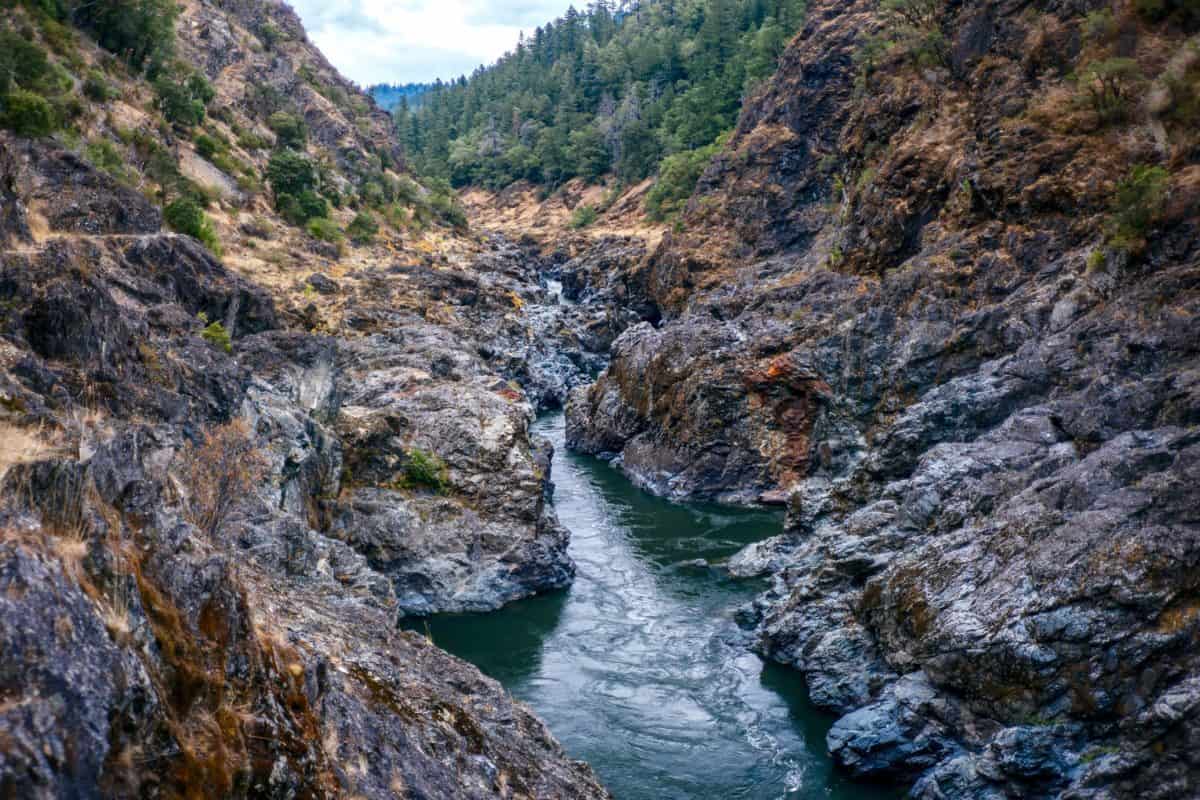
Flournoy Formation
Finally, the Flournoy formation emerges around Tate Creek and continues down to take out at Foster Bar. The geology changes dramatically from metamorphic rock to sedimentary rock and is easily seen in the conglomerate rock. This formation is the softest formation, most easily eroded, which is evident by the widening of the river canyon.
- Conglomerate, marine rocks (sedimentary)
- 50 million years old, the youngest formation
Geology Lingo
Conglomerate – is a coarse-grained clastic sedimentary rock that is composed of a substantial fraction of rounded to subangular gravel-size clasts, e.g., granules, pebbles, cobbles, and boulders, larger than 2 mm (0.079 in) in diameter
Metamorphism – the act of altering the composition or structure of a rock through intense heat and pressure.
Metavolcanic – Metamorphic rock that is formed from volcanic lava and then buried under more rock only to be morphed and recrystallized again by metamorophism.
Metasediment – Sedimentary rock that is altered and deformed through metamorphism.

